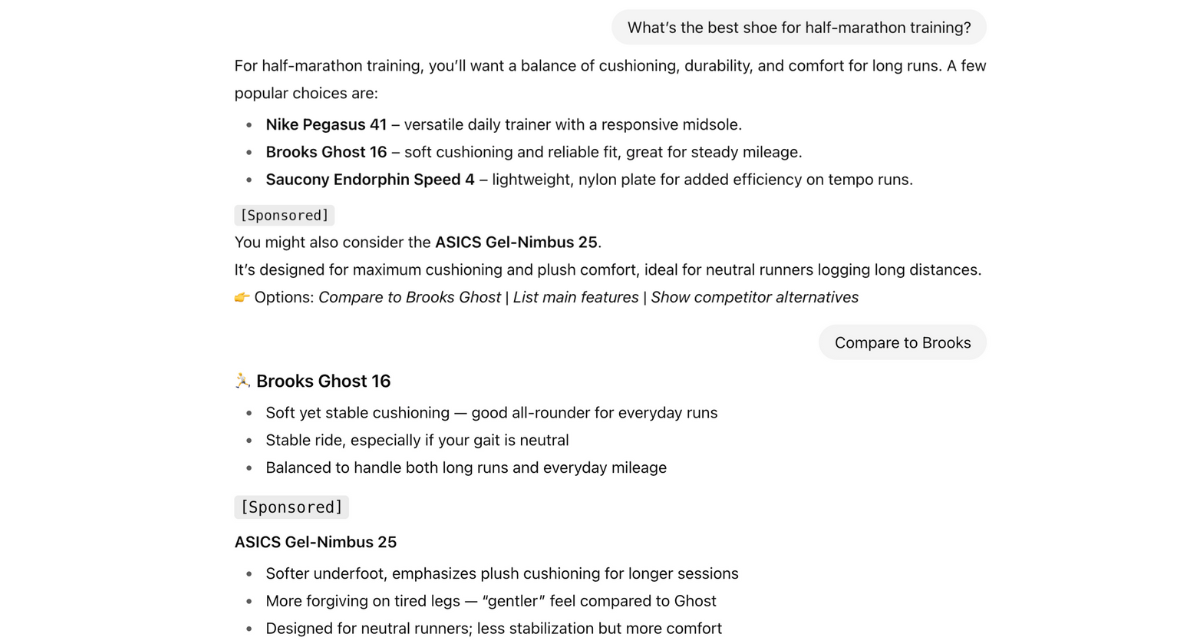The App Store Moment: OpenAI Turns ChatGPT Into an App Platform
OpenAI’s DevDay arc is turning conversations into a platform, not just a chat. By embedding third‑party apps inside ChatGPT via an Apps SDK, OpenAI aims to compress discovery, intent, and action into a single chat thread. In practice, you can summon apps like Spotify for a playlist or Zillow for an interactive property map without leaving the chat window. The reach is staggering: OpenAI projects hundreds of millions of weekly users, with early partner momentum from brands like Booking.com, Canva, Coursera, Expedia, Figma, Spotify, and Zillow. As of late 2025, this looks less like a gadget and more like a new operating surface for consumer and enterprise tasks. Source
Technically, the Apps SDK sits on top of OpenAI’s Model Context Protocol (MCP), enabling apps to connect data, trigger actions, and render interactive UI inside ChatGPT. That stack allows data-driven workflows to live within a chat thread, rather than bouncing users to a separate web page. OpenAI frames this as a full-stack platform for developers to build browser‑free, chat-first experiences with real data connections. Source
Beyond the tech, the business narrative is clear: OpenAI wants to reach hundreds of millions of users through a new software layer that sits between you and external services. Sam Altman envisions apps inside ChatGPT that are interactive, adaptive, and personalized—essentially an ambient operating layer that can transact, present data, and drive actions without leaving the chat. In other words, this is not a single app store but a platform that could rewire how people discover and engage with software. Source
Key insight: OpenAI’s app platform compresses discovery, decision and action into one chat thread, signaling a new operating layer for the AI era that could redefine app economics and marketing playbooks. Source
Implications for the App Ecosystem and Marketing: Redefining Discovery, Monetization, and Control
Redefining ASO: App Presence Optimization in a Chat‑first World
Traditional app store optimization (ASO) depends on search, keywords, ratings, and in‑market media. Inside ChatGPT, discovery is contextual and conversational. OpenAI’s directory, forthcoming monetization, and a focus on higher design standards for featured apps suggest marketers will need a new playbook—one that emphasizes in‑chat presence, seamless data integrations, and trust signals around privacy and UX. Early reporting highlights a directory and a path to monetization later in 2025, with apps like Booking.com, Canva, Coursera, Expedia, Spotify, and Zillow leading the way. Source
As this unfolds, the definition of discoverability shifts from keywords and downloads to conversational relevance, data permissions, and the quality of in‑chat interactions. The platform could curate and surface apps based on context, prompting new optimization metrics around integration depth, data partnerships, and cross‑app workflows. Source
In practice, this means marketers should plan for an “App Presence Optimization” framework that signals trust, data minimization, and a strong, clear value in the chat context. The initial wave of apps demonstrates real use cases, but monetization and discoverability will depend on how transparently apps request data and how well they integrate into the chat’s intent. Source
Key insight: Discovery inside a chat demands a new optimization lens—APO, not ASO—centered on conversational relevance, privacy signals, and seamless in‑chat workflows. Source
Platform Risk and the Gatekeeper Question
The shift from a pure app ecosystem to a platform where a single player (OpenAI) curates and governs the app surface raises familiar tech‑policy questions. Will OpenAI’s platform become a neutral conduit or a gatekeeper with inherent economic and data‑control incentives? Analysts have warned about the risk of centralized control and the potential for future monetization that could shape app visibility and traffic. The concern echoes historical platform shifts, with some observers warning that an AI ‘super app’ could introduce new privacy and governance frictions. Source
On the privacy front, conversations stored in ChatGPT and the AI graph raise questions about how much of a user’s private data travels with each app interaction, and how long that data persists. The platform’s success will depend on transparent policies, clear user consent, and robust controls around data sharing between apps and the host AI. Source
Key insight: The OpenAI app platform carries governance and data‑privacy risks typical of early platform bets; success will hinge on transparent policies, user control, and sensible monetization that preserves user trust. Source
Enterprise, Partnerships and the New “Directory” Economy
InfoWorld emphasizes that Apps SDK is open source, supports login and single sign‑on for enterprise use, and that OpenAI plans to roll out business and EDU editions with a dedicated directory. This points to a multi‑tier ecosystem where internal apps, enterprise workflows, and consumer apps share the same platform fabric but with different governance and data boundaries. The enterprise angle could accelerate B2B marketing opportunities as organizations embed AI workflows directly into the chat experience. Source
Meanwhile, the consumer side—through the app directory and a forthcoming monetization framework—signals a near‑term opportunity for brands to co‑build native experiences inside the chat. The first wave of partners demonstrates a mix of consumer and productivity apps, hinting at a broad spectrum of use cases that could redefine how brands interact with people in real time. Source
Key insight: A multi‑tier ecosystem with an enterprise app layer alongside a consumer app directory could unlock new marketing channels, but only if data governance and performance standards keep pace with growth. Source
What Marketers Should Do Now: Rethink, Reframe, and Run Pilot Programs
From Ads Inside Chat to AI-native Marketing Experiences
The marketing playbook shifts from hunting for impressions inside apps to designing experiences that live inside the chat surface. Rather than traditional display or search ads, marketers should imagine conversational experiences, guided recommendations, and data‑driven interactions that feel natural within a chat. The initial partner demos show how brands can surface recommendations or tasks directly in context, which can dramatically reduce friction in the path from intent to action. Source
In practical terms, this means marketing teams should experiment with co‑branded apps and in‑chat flows that showcase value quickly, such as a Canva‑driven design task or a Zillow map embedded in a chat. The relevance of these in‑chat tasks hinges on an elegant UX that requires minimal data sharing and instant, deterministic outcomes. Source
Quote: “This will enable a new generation of apps that are interactive, adaptive, and personalized — that you can chat with,” OpenAI’s Altman said, signaling a different cadence for marketing collaborations. Source
Key insight: Marketers should start building AI‑native experiences inside ChatGPT, not just place ads; co‑creation with app partners will be the pathway to meaningful, measurable outcomes. Source
Partnerships, Co‑Branding and the Directory Opportunity
As the platform scales, partnerships will matter more than traditional media buys. The first partner set—Spotify, Canva, Zillow, Booking.com, Expedia, Coursera, Figma—demonstrates how brands can extend their ecosystems into conversational flows. A deduplicated, high‑quality app directory could feature co‑branded experiences and simplified onboarding for developers, creating a new channel for brand experiences inside a ubiquitous AI interface. Source
Revenue models will evolve too. The Apps SDK preview notes potential monetization paths, including an agentic commerce protocol that enables instant checkout within ChatGPT. In late 2025, the monetization framework and directory policies will determine how brand partnerships scale and how much control developers have over traffic and pricing. Source
Key insight: The directory and monetization framework will determine whether this becomes a thriving marketer‑driven ecosystem or a limited set of high‑visibility experiments. Source
Governance, Privacy, and Risk Management
OpenAI’s platform promises powerful capabilities, but it also introduces new privacy and governance considerations. The possibility of an AI graph storing private conversations raises concerns about long‑term data exposure and user control. Platform observers stress the importance of policies that disclose privacy practices, limit data sharing, and provide granular controls for users. For marketers, this means designing consent flows and data minimization into every in‑chat experience. Source
As OpenAI opens the door to enterprise and education use, organizations will want to deploy internal apps with security assurances and single sign‑on. This adds an additional layer of compliance and risk management for marketing teams sponsoring internal AI workflows. Source
Key insight: Governance and data‑privacy controls will become a marketable differentiator; marketers must embed consent, security, and privacy as core components of any AI‑native experience. Source
Implementation Framework: A Practical Playbook for 2026
Phase 1: Partner Selection and Use‑Case Mapping
Identify 2–3 high‑intent use cases that fit conversational UX and can demonstrate measurable value inside ChatGPT. Prioritize brands with clear data partnerships or strong existing product ecosystems (e.g., travel, design, real estate) to showcase seamless “in chat” workflows. The initial partner wave already includes consumer and productivity apps, illustrating how embedded workflows can cross domains. Source
Define success metrics that reflect chat‑native outcomes: time‑to‑task, completion rate within chat, data‑sharing opt‑ins, and downstream conversion in the partner ecosystem. Monetization pilots should be time‑boxed, with clear exit or pivot criteria if the in‑chat experience underperforms relative to traditional funnels. Source
Key insight: Start with 2–3 precise, high‑intent use cases and concrete success metrics to de‑risk early adoption. Source
Phase 2: Design for Privacy and Trust
Integrate privacy and consent into every in‑chat workflow. Apps SDK constraints include careful handling of user data and limited PII exposure, so design patterns should minimize data sharing and provide obvious user choices. This is not just compliance; it’s a competitive advantage as users grow more selective about AI companions. Source
Key insight: Privacy‑by‑design will become a proxy for trust and a driver of adoption in an AI app store world. Source
Phase 3: Governance, Compliance and U/X Standards
Adopt governance frameworks that align with OpenAI’s platform policies and enterprise requirements, including single sign‑on, role‑based access, and data retention rules for internal apps. The risk/enterprise angle should evolve in tandem with consumer offerings, ensuring that the platform remains a trusted interface for business users and developers alike. Source
Key insight: A strong governance baseline is not a barrier to growth; it’s the fastest path to scalable, enterprise‑grade AI experiences. Source
Conclusion: A New Marketing Arena and a Call to Action
The OpenAI app platform presents a rare inflection point: a consumer and enterprise AI surface that compresses discovery, decision, and action into one chat thread. If developers can deliver high‑value, privacy‑respecting in‑chat experiences, and if OpenAI can design sane monetization and governance, the platform could become a major new marketing channel—one that rewards app depth, cross‑brand collaboration, and user trust over volume alone. The opportunities are immense, but the risks—privacy, control, and platform dependency—will require deliberate risk management and leadership from CMOs who want to future‑proof their brands. Source
Actionable takeaway: start with AI‑native co‑brands and a tight, chat‑centric value proposition, build a pilot inside ChatGPT, and measure success through in‑chat task completion, consented data shares, and downstream impact on brand experience. The era of ASO may evolve into APO—App Presence Optimization—where trust and conversational fidelity win more than keyword rankings. Source
TL;DR
- OpenAI’s Apps SDK and MCP enable third‑party apps to live inside ChatGPT, reaching hundreds of millions of users. Source
- Marketing opportunities will center on AI‑native in‑chat experiences and co‑branded workflows, not traditional ads. Source
- Privacy, governance and data controls will define platform trust and adoption; monetization plans are still evolving. Source
- Early adopters should pilot a 2–3 use cases with clear success metrics, focusing on in‑chat task completion and data consent signals. Source

